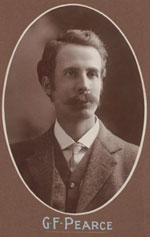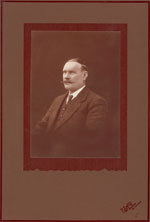51 Quorum at commencement of sitting
-
If there is not a quorum present when the chair is taken at the time appointed for a meeting of the Senate, the bells shall be again rung for 5 minutes, and if there is still not a quorum present the President shall adjourn the Senate to the next sitting day.
-
A senator having entered the chamber at or after the time appointed for the meeting of the Senate shall not withdraw until a quorum is formed or the Senate adjourned.
Amendment history
Adopted: 19 August 1903 as SOs 51 and 52 (corresponding to paragraphs (1) and (2))
Amended:
- 9 September 1909, J.120 (to take effect 1 October 1909) (parts of original SO transferred to new SOs; superfluous words removed)
- 11 June 1914, J.79–80 (changes of expression only, not substance)
- 19 August 1975, J.851 –54 (ringing of bells for the second time extended from 2 to 3 minutes – reference subsequently superseded)
1989 revision: Old SOs 54 and 55 combined, structured as two paragraphs and renumbered as SO 51 ; bells to ring for the second time for 5 minutes; expression considerably streamlined and language modernised
Commentary

Senator Sir George Pearce (Nat, WA) (Source: National Library of Australia)

Senator the Hon. John Newlands (Nat, SA), President of the Senate 1926–29 (Source: National Library of Australia)
Section 22 of the Constitution provided for a quorum of the Senate to be one third of the whole number of senators, until the Parliament provided otherwise. With 36 members until 1949, the quorum of the Senate was therefore 12. The now superseded special majorities required under some standing orders were based on the formula of a quorum plus one and were thus set at 13 (see SOs 144 and 199, for example). The Senate (Quorum) Act 1991 altered the quorum to one quarter of the whole number of senators (currently 19 out of a total of 76).
Despite its amendment history, the standing order has not changed in principle. The amendments reflect a series of efforts to pare back the rule to its essence by removing material covered in other standing orders. The original standing order as proposed was described as being partly new:[1]
The Chair shall be taken and Prayer read at the time appointed on every day fixed for a meeting of the Senate; but if, at the expiration of five minutes after that time, the bells having been again rung for two minutes, there be not a Quorum of at least one-third of the whole number of Senators, the President shall adjourn the Senate to the next sitting day; the names of the Senators present, in either case, being entered in the Journals.
The drafting lacks clarity and attempts to rectify it started as early as 1909 when the Senate agreed to new standing orders on the meeting of the Senate (see SO 49) and the adjournment of the Senate for want of a quorum (see SO 52(6)), and words were removed from paragraph (1) as a consequence. Words repeating s.22 of the Constitution were also removed as superfluous.
Amendments in 1914 rearranged the phrases but did not necessarily improve the clarity or reduce the repetition:
If there be a Quorum present the Chair shall be taken and Prayer read at the time appointed on every day fixed for the meeting of the Senate; but if there be not a Quorum present, and if, at the expiration of five minutes thereafter, the bells having been again rung for two minutes, there still be not a Quorum present, the President shall adjourn the Senate to the next sitting day.[2]
Not till the second draft of the revised standing orders was tabled in November 1989 was the central purpose of paragraph (1) finally revealed as providing for the absence of a quorum at the commencement of the sitting.[3] The case of a quorum being present was already implicit in SOs 49 and 50, in the President taking the Chair and reading prayers, and did not need to be provided for again in SO 51.
The 1989 revision also removed an anomaly in the timing which left a gap between the ringing of the bells again for two, then three, minutes and the expiration of five minutes from the time the President took the chair before the Senate could be adjourned for want of a quorum. The revised version provided for the bells to be rung a second time for another five minutes, replicating the arrangement under SO 49.
In 1928 an entire sitting week was lost when, on each of the three days, a quorum was not formed at the commencement of the meeting. The following sitting week, an explanation was provided by Senator Pearce (Nat, WA), Vice President of the Executive Council. In the preceding week when the Senate had not been sitting, a censure motion had been moved against the government in the House of Representatives and this had carried over into the following week when the Senate was due to meet. In accordance with practices then followed, the censure motion was regarded as a want of confidence and the government had not proceeded with any legislation or major acts of administration while it was unresolved. Had the Senate met, the government would have moved to adjourn it while the censure motion continued in the House. Pearce therefore advised the Government Whip to inform senators to stay at home, while President Newlands had agreed to be present in Canberra and take the Chair on each day so that SO 51 could operate.[4] These circumstances are unlikely ever to be replicated.[5]
See Odgers’ Australian Senate Practice, 14th edition for commentary on the application of the quorum provisions in SOs 51 and 52.